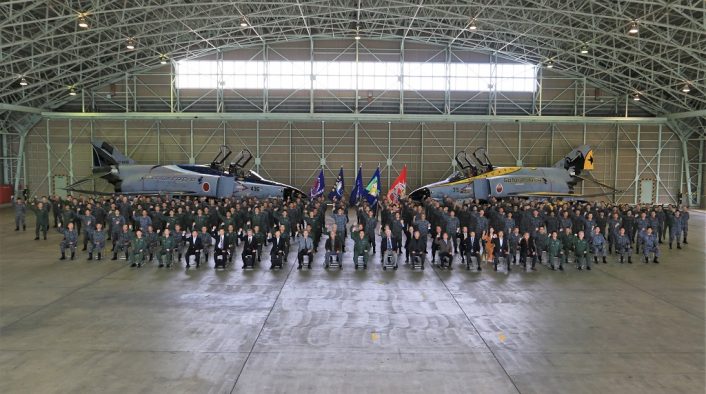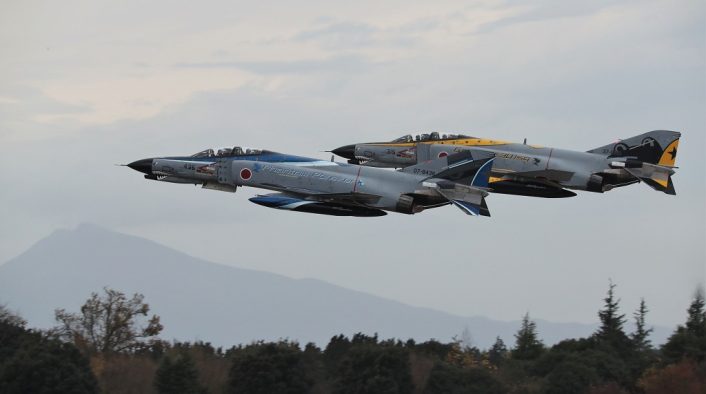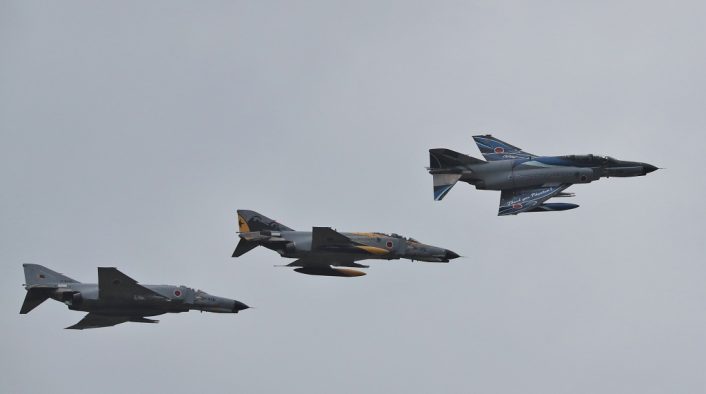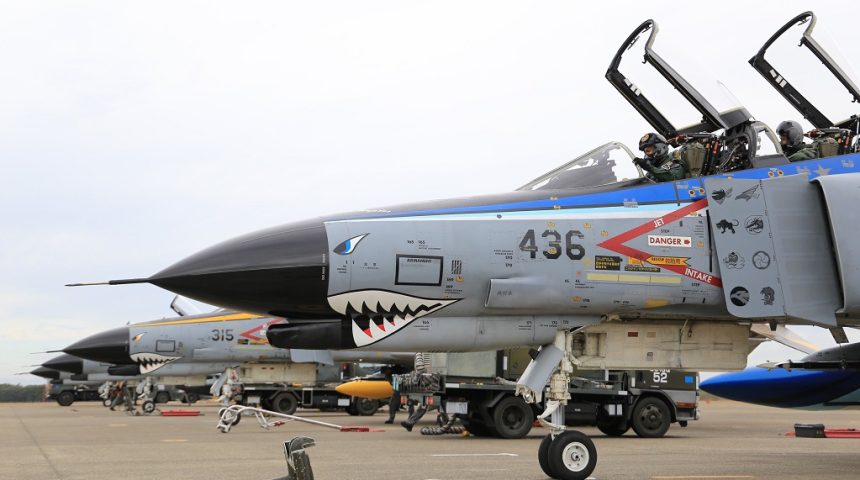After retiring its last F-4EJ Phantom fighters, 301 Hikotai will now relocate to Misawa AB to become the second F-35A unit of the JASDF.
The Japan Air Self-Defense Force (JASDF) celebrated the retirement of the F-4EJ Kai Phantom II, after 48 years of service, on Nov. 20, 2020 at Hyakuri Air Base. The event saw the participation of current and former Phantom squadron commanders, JASDF generals and base personnel, who remembered the achievements of the F-4 and discussed the future after its retirement. After the ceremony, three Phantoms performed a last flight over the airbase.
The last squadron flying the Phantom, the 301 Hikotai “Samurai” (or Tactical Fighter Squadron), prepared two special colored aircraft for the F-4EJ farewell. A first one (37-8315) shows yellow and black bands on the upper fuselage, wings and external fuel tanks, a shark mouth, the writing “Go for it!! 301sq” on the exterior of the air intakes and the frog (the Japanese common toad found on Mount Tsukuba near Hyakuri) from the unit’s insignia on the tail. The second one (07-8436) is a farewell special color, with blue, cyan, white and black bands on the upper fuselage, wings and external fuel tanks, a shark mouth, the writings “Phantom forever” on the exterior of the air intakes and “Thank you Phantom II” on the upper surface of the wings and the Phantom “Spook” on the tail.
Before becoming the last squadron to fly the Samurai Phantom, the 301 Hikotai, was the squadron that introduced the F-4EJ in the JASDF in 1972. It was assigned as a temporary squadron in Hyakuri with just two aircraft before taking over the Operational Conversion role after receiving other aircraft. After a relocation to Nyutabaru Air Base in 1985, where it received the upgraded F-4EJ Kai (“extra”) variant, the squadron returned to Hyakuri in 2016, following a JASDF reorganization. 301 Hikotai is now set to move to Misawa Air Base to become the second F-35A unit.
本日 #百里基地 は、#第301飛行隊 壮行行事を実施しました。48年間に及ぶ #F4 運用の終止符として、基地協力団体代表の方々、歴代飛行隊長、総隊司令官、統幕副長をはじめ多くの方々のご臨席を賜り301飛行隊の偉業をたたえるとともに新たな門出を祝いました。 pic.twitter.com/FbrXLG9ao3
— 航空自衛隊百里基地 (@jasdf_hyakuri) November 20, 2020
The F-4EJ Phantom were initially very limited in their air-to-air capabilities and without air-to-air refueling and air-to-ground capabilities, being limited to carry the built-in M61 cannon and AIM-9 Sidewinder missiles for self-defense only. In 1982 works started for a Service Life Extension Program (SLEP), which resulted in the F-4EJ Kai. The upgrade notably retrofitted the missing air-to-air refueling and air-to-ground/ship capability, as well as complete air-to-air capability.

Features of the update include a modified radome for the new APG-66J radar, ability to carry the AN/ALQ-131, a UHF antenna on the spine of Phantom and the Radar Warning Receiver (RWR) antennas J/APR-6 mounted on the top of the fin. Of 140 Phantoms procured and mostly manufactured under license by Mitsubishi Heavy Industries (MHI) in Nagoya, including the last Phantom delivered in the world (17-8440) on May 20, 1981, 96 F-4EJ received this modification.

Earlier this year, the JASDF retired the RF-4E and RF-4EJ operated by the 501 Hikotai (or Tactical Reconnaissance Squadron) at Hyakuri Air Base which were among the world’s most famous, because of their trademark sharkmouth, the unit’s woodpecker emblem on the tail and the three camo schemes (European, Vietnam and Blue offshore camouflage). Following the retirement, the squadron was disbanded, while the reconnaissance role should be taken over by the F-35A by using its EOTS (Electro-Optical Targeting System).
During the last month of 301 Hikotai flying the Phantom, the base also hosted some F-2s “Viper Zero” to support the squadron. Eventually, 3 Hikotai is scheduled to transfer its F-2s at Hyakuri from its current base at Misawa after the F-4 retirement and 301 Hikotai relocation. Some non-frontline Phantoms flies in Gifu at the Air Development and Test Wing (ADTW), but its mission is expected to be completed soon now that the F-4EJ Kai has been retired from the 301 Hikotai.










